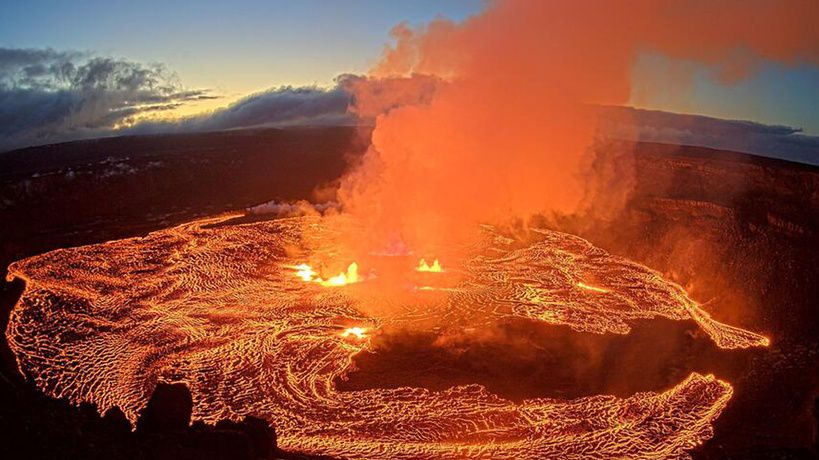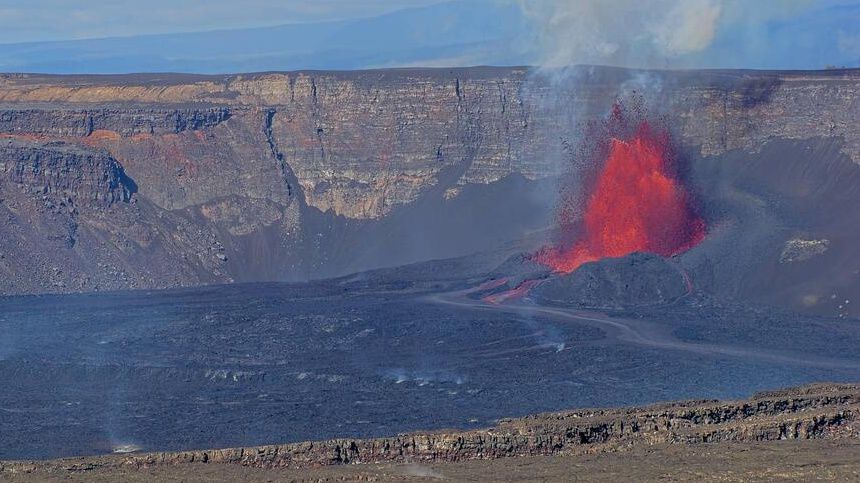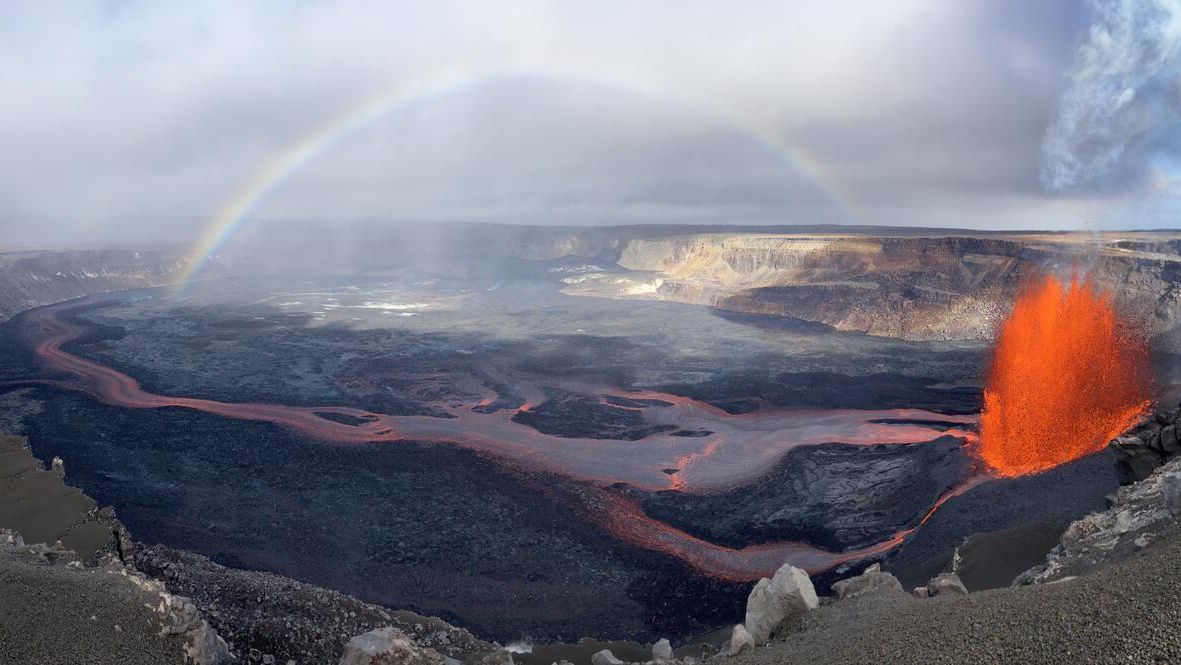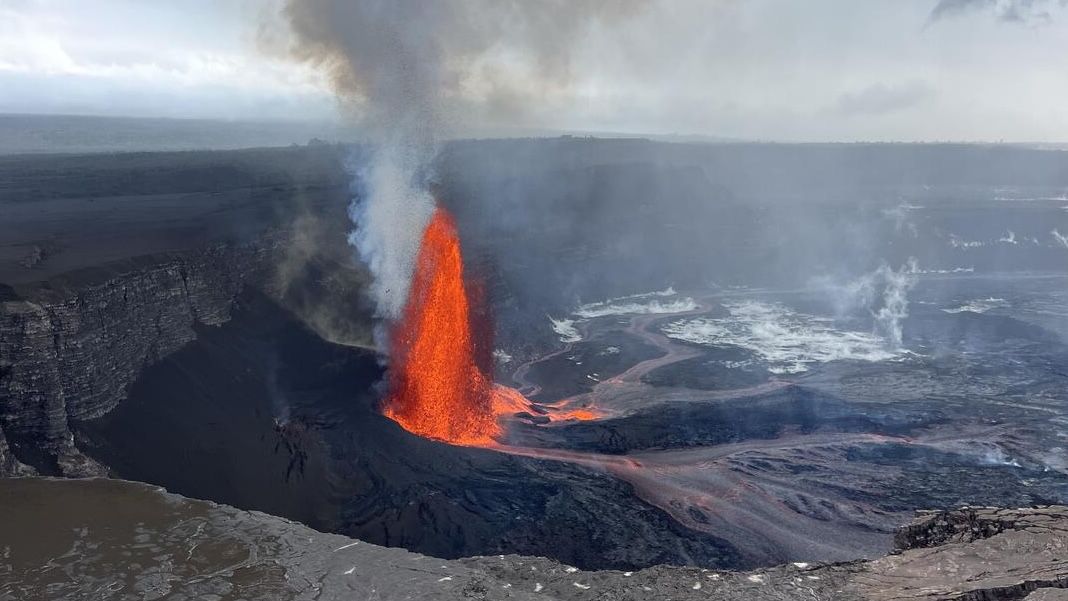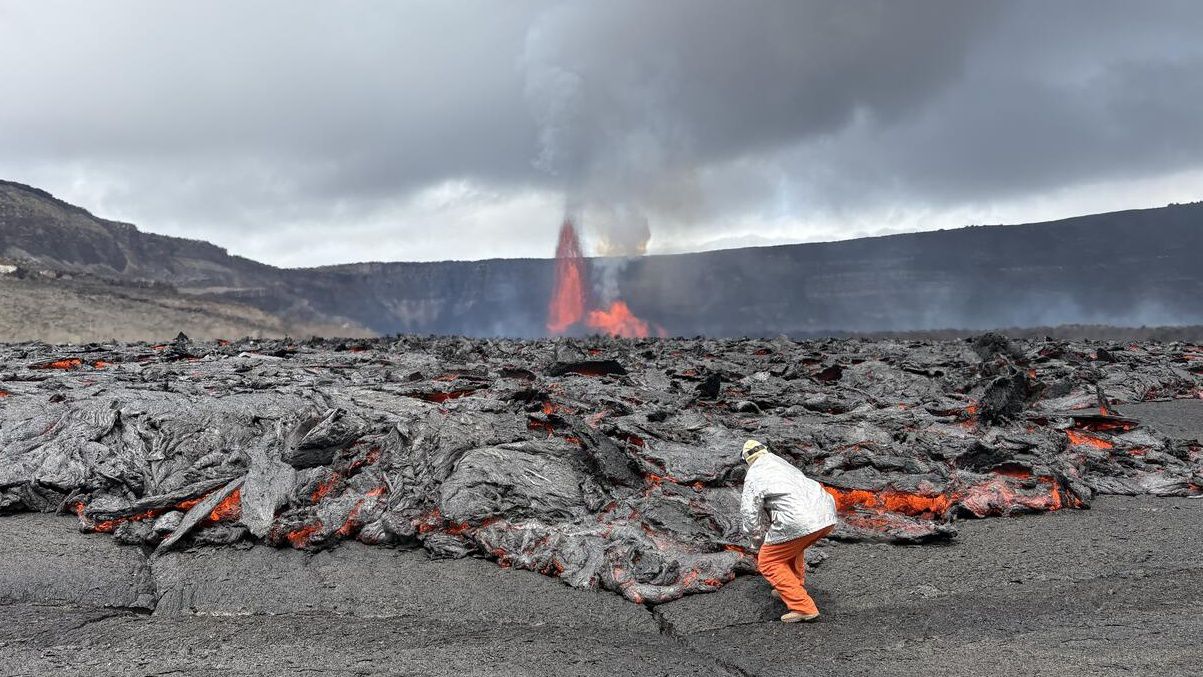HONOLULU — The U.S. Geological Survey released video showing an overflight of Kilauea, the second largest volcano in Hawaii, which began erupting on Wednesday after a three-month pause, officials said.
The survey’s Hawaiian Volcano Observatory said in a statement that a glow was detected in webcam images from Kilauea’s summit early in the morning, indicating that an eruption was occurring within the Halema’uma’u crater in the summit caldera.
The images showed fissures at the base of the crater generating lava flows on the crater floor's surface, the observatory said.
Before issuing the eruption notice, the observatory said increased earthquake activity and changes in the patterns of ground deformation at the summit started Tuesday night, indicating the movement of magma in the subsurface.
All activity is within a closed area of Hawaii Volcanoes National Park, on Hawaii's Big Island.
The volcano’s alert level was raised to warning status and the aviation color code went to red as scientists evaluate the eruption and associated hazards.
About 12 hours after the eruption began, multiple minor fountains remained active on the crater floor. One fissure also remained active on the southwest wall of the caldera, according to the Hawaiian Volcano Observatory. Fountain heights decreased to about 13-30 feet high as of 3 p.m. Hawaii time on Wednesday.
Earthquake activity at the summit diminished after the eruption started. Now, there is a continuous eruptive tremor, which signals fluid movement. Volcanic gas emissions are elevated, according to the observatory.
Residents of Pahala, which is about 20 miles downwind of Kilauea’s summit, reported a very light dusting of gritty, fine ash and Pele’s hair in the morning.
Kilauea, one of the world’s most active volcanoes, erupted from September 2021 until last December. For about two weeks in December, Hawaii’s biggest volcano, Mauna Loa, also was erupting on Hawaii’s Big Island.
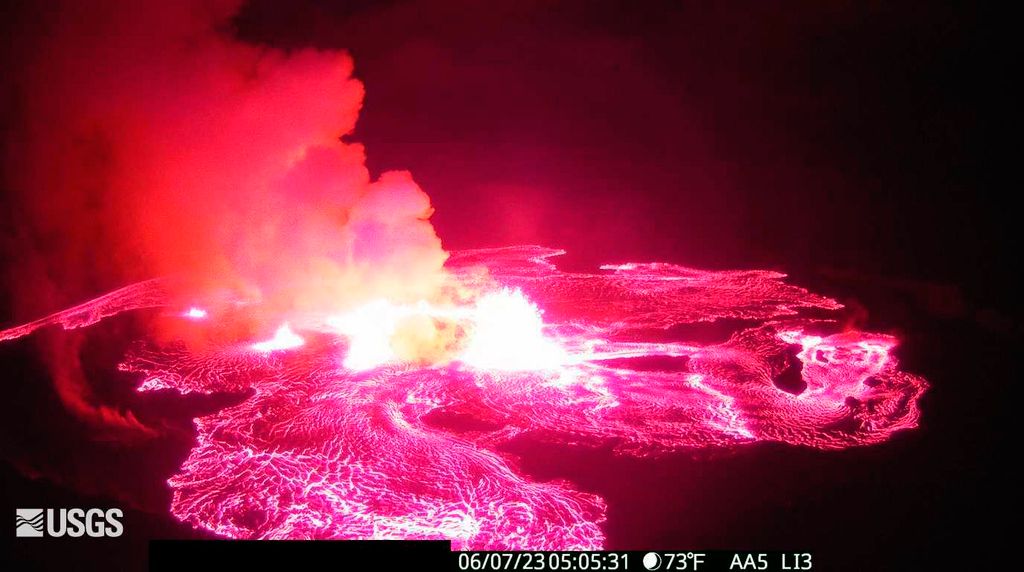
After a short pause, Kilauea began erupting again in January. That eruption lasted for 61 days, ending in March.
A 2018 Kilauea eruption destroyed more than 700 homes.
Before the major 2018 eruption, Kilauea had been erupting since 1983, and streams of lava occasionally covered farms and homes. During that time, the lava sometimes reached the ocean, causing dramatic interactions with the water.





